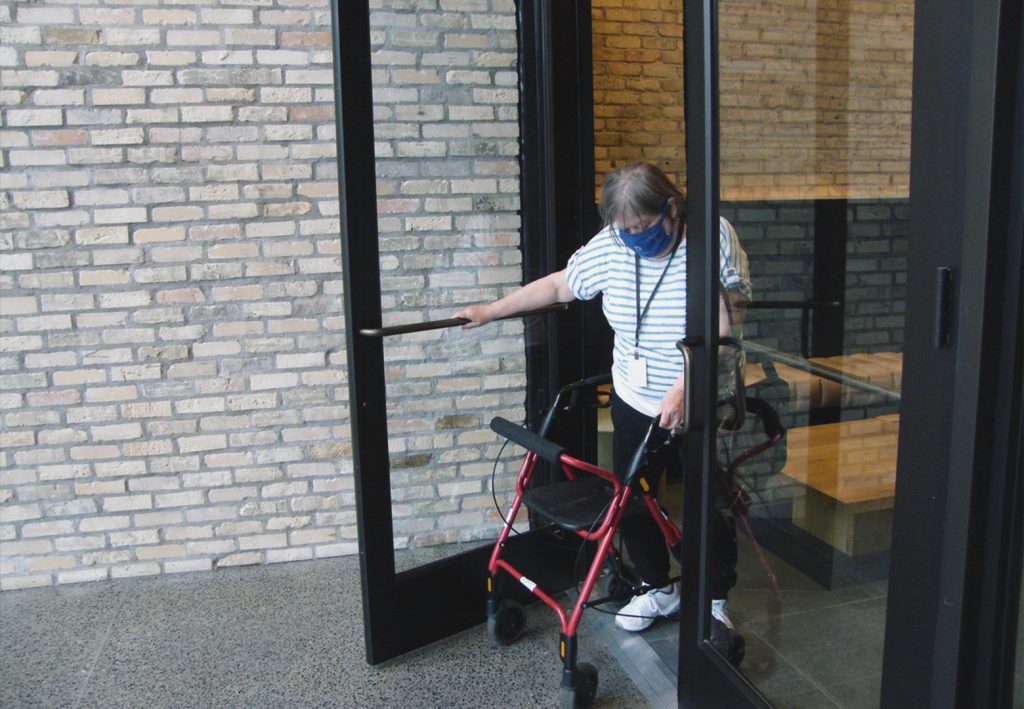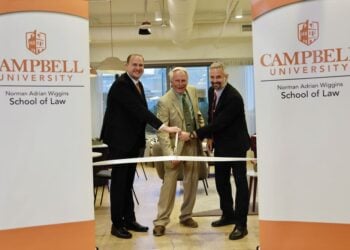One of our clients, let’s call her Bette, has a compromising spinal injury. Her apartment’s exterior doors were too heavy to manage, and simple tasks like removing the trash were a dangerous undertaking.
“I got hit by the door many times,” Bette says. “I saw one of my neighbors lifted off her feet when the door hit her walker.”
The senior building where Bette lives had few accommodations to make things easier for older people with mobility challenges. The onset of COVID-19 and the loss of indoor communal spaces exacerbated Bette’s sense of isolation.
“The pandemic made me feel more trapped than ever. I couldn’t get outside and there was nothing social left inside.”
Bette started looking for a new place to live and was shocked by how much rent had increased in recent years. She concluded that her only feasible option was to stay in her current building. After learning that some neighbors shared her safety concerns, she began looking for solutions to benefit everyone.
“I’ve been in this apartment for 16 years,” she said. “This is my home. I decided that for me, it’s personal. I live here and I’ve been hit by the doors. I thought I could maybe do something.”
Bette contacted the Minnesota Disability Law Center. She was referred to Karla Krueger, Supervising Attorney for the Senior Law Project in the St. Cloud office. Krueger quickly recognized that Bette’s situation required a reasonable accommodation under the Fair Housing Act.
“We always start with a request,” Krueger says. “We open with the goal of collaboration and brainstorming solutions with the landlord.”
Krueger’s opening letter to Bette’s landlord included the Department of Justice and the Department of Housing and Urban Development’s joint statement on reasonable accommodations. She requested the installation of power assisted doors.
The landlord responded immediately. She was willing to investigate her options but was concerned about the cost of installing power assisted doors and the potential security risks.
Krueger researched solutions for making the trash and entrance doors accessible while maintaining the building’s security and sent the landlord some resources. Within three months, the landlord reported to Krueger that she had found an affordable way to install the power assisted doors. A week later, the new doors were installed at the building’s main entrance.
Although individuals like Bette may wish to advocate independently for themselves, landlords are often more cooperative when confronted by the authority of an attorney.
“I reported past issues and there was a lack of understanding,” Bette says. “Management did a number on me by talking down to me and yelling. That’s part of the reason why I didn’t think I’d get any results on my own.”
With the new power assisted doors, residents can safely exit the building, maintaining their independence and a sense of freedom. Bette’s decision to take action improved life for everyone in her building. Legal Aid’s collaborative approach resulted in a sustainable change that considers the needs and interests of all parties.
“This would not have happened without Karla’s intervention,” Bette says. “If they hadn’t installed those doors, I wouldn’t be able to go outside, ever. I see my neighbors going in and out of the doors easily now with their walkers and canes. At this stage of the game, the feeling of independence is great. It makes me feel good that I stuck my neck out.”







